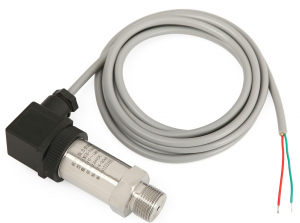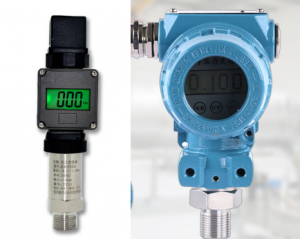The Ultimate Guide to Selecting a Diffused Silicon Pressure Transmitter
Among the many types of pressure transmitters—including ceramic, capacitive, and monocrystalline silicon variants—diffused silicon pressure transmitters have become the most widely adopted solution for industrial measurement applications.
From oil & gas to chemical processing, steel production, power generation, and environmental engineering, these transmitters deliver reliable and accurate pressure monitoring across gauge pressure, absolute pressure, and vacuum applications.
What Is a Diffused Silicon Pressure Transmitter?
The technology originated in the mid-1990s when NovaSensor (USA) pioneered micro-machined silicon diaphragms bonded with glass. This breakthrough created compact, high-accuracy sensors with exceptional repeatability and corrosion resistance.
Operating Principle
- Process pressure transmits through an isolating diaphragm and silicone oil to a silicon diaphragm
- Reference pressure (ambient or vacuum) applies to the opposite side
- Resulting deflection is detected by a Wheatstone bridge of strain gauges, converting pressure into an electrical signal
8 Essential Selection Criteria
1. Measured Medium Compatibility
The sensor material must match the chemical and physical properties of your process fluid:
- Standard designs use 316L stainless steel diaphragms for most applications
- For corrosive or crystallizing fluids, specify flush diaphragm transmitters
- Food-grade options available for pharmaceutical and beverage applications
- High-viscosity media (slurry, mud, asphalt) require cavity-free flush diaphragm designs
2. Pressure Range Selection
Available ranges span from -0.1 MPa to 60 MPa. Always select a range 20-30% higher than your maximum operating pressure to prevent overloading.
Pressure Unit Conversion Guide
| Unit | Equivalent Value |
|---|---|
| 1 MPa | 10 bar / 1000 kPa / 145 psi |
| 1 bar | 14.5 psi / 100 kPa / 750 mmHg |
Gauge vs. Absolute Pressure: Gauge pressure references ambient pressure (zero equals atmosphere), while absolute pressure references vacuum. For high-altitude applications, use vented gauge sensors to compensate for local atmospheric variations.
Special Application Considerations
Ammonia Gas Measurement
Specify gold-plated diaphragms or specialized anti-corrosive coatings to prevent sensor degradation in ammonia service. Ensure the transmitter housing meets NEMA 4X or IP66 ratings for outdoor installations.
Hazardous Area Installations
For flammable or explosive environments:
- Request fluorinated oil (FC-40) instead of standard silicone oil fill
- Verify certifications for intrinsically safe (Ex ia) or flameproof (Ex d) applications
- Ensure proper grounding and barrier installation per IEC 60079 standards
Conclusion
Diffused silicon pressure transmitters offer an optimal balance of precision, durability, and versatility across industrial processes. Proper selection—from media compatibility assessment to output signal specification—ensures both measurement accuracy and long-term reliability.
Whether monitoring high-pressure steam lines, controlling chemical reactions, or ensuring safe ammonia handling, the right transmitter configuration enhances both process efficiency and operational safety.
Post time: Jun-12-2025






